Low Stress vs High Stress Training
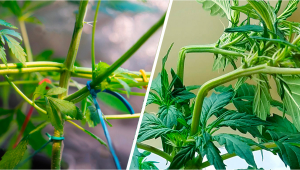
- 1. Low stress training techniques (lst)
- 1. a. The tie-down method
- 1. b. Screen of green (scrog)
- 2. High stress training techniques (hst)
- 2. a. Topping
- 2. b. Fim
- 2. c. Super cropping
- 3. Training autoflowering plants
- 4. Our recommended training schedule for autos
- 5. In conclusion
As you may know, there are ways to train your plant, these methods may greatly increase your final harvest, by allowing more light to reach the buds you can expect bigger yields and overall better flower quality. Training techniques are divided into two categories: Low Stress Training (LST) and High Stress Training (HST).
1. Low Stress Training Techniques (LST)
LST does not involve damaging your plant directly, they won’t have a big impact on your plant but you’ll have to perform training several times a week until reaching the desired result.
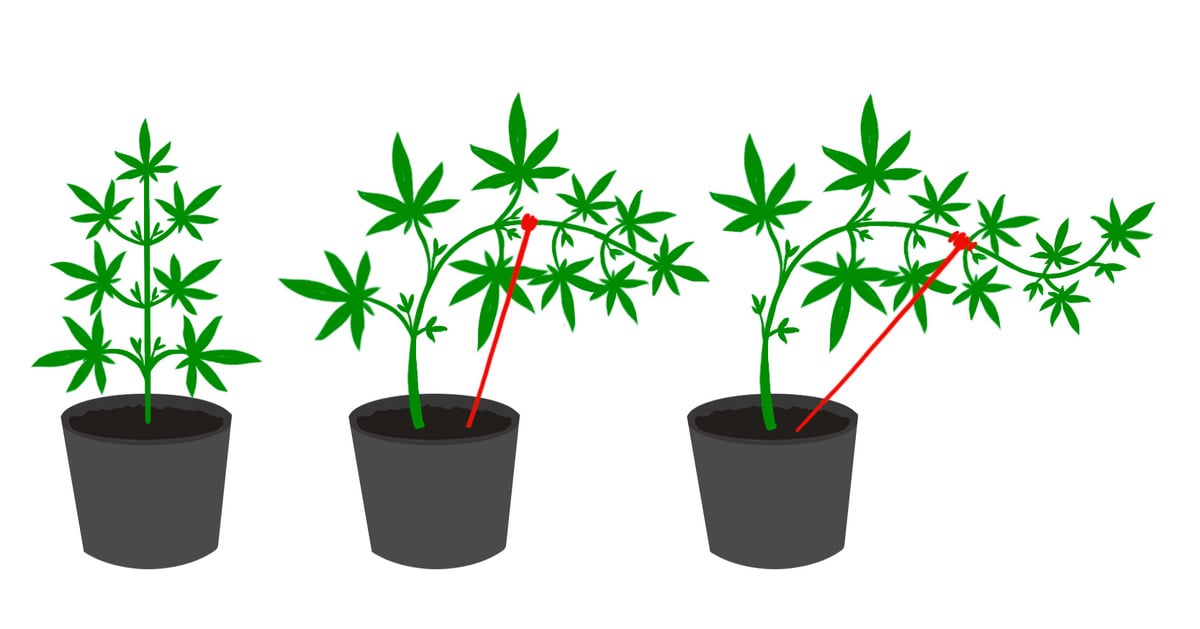
The Tie-Down Method
This method consists of using a string or fishing line to tie down your plant’s branches. Growers use this method to be able to control stretching and at the same time level canopy, allowing light to reach all bud sites equally. By performing it correctly, you won’t only adapt your plant to your grow space but also allow light to reach the lower buds, resulting in a bigger yield, denser buds, and overall better harvest.
Screen of Green (SCROG)
This method has the same results as the tie down method, the difference is it uses a net or screen (similar to a volleyball net) to hold down branches. Just like the tie down method, growers use this method to level canopy allowing light to reach all bud sites and at the same time control stretching.
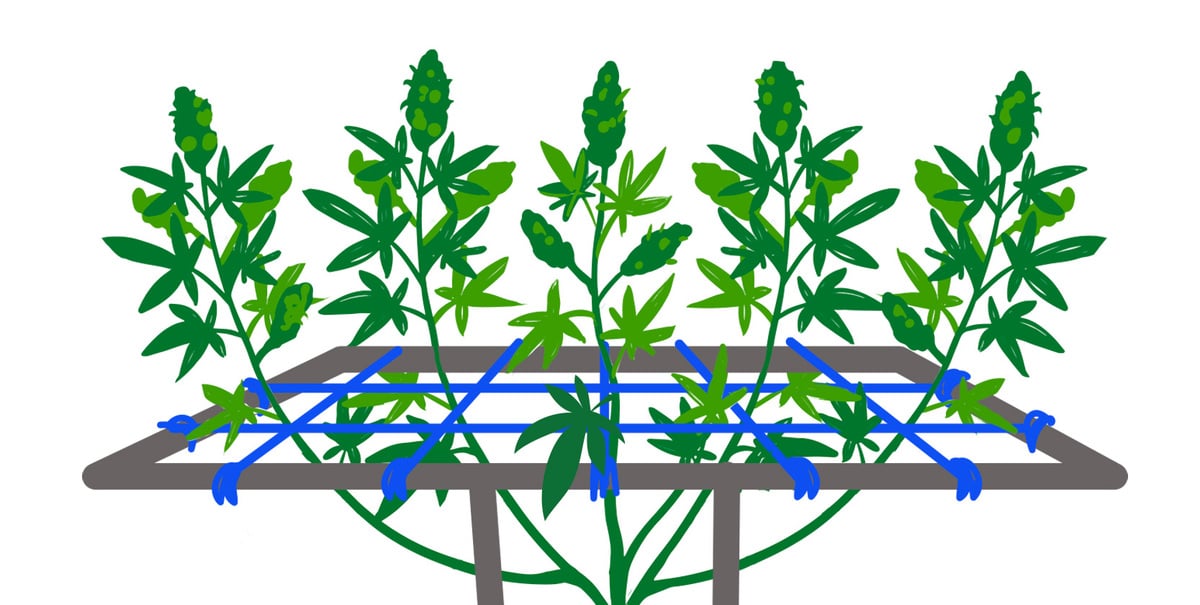
Even though you save time by not having to tie down each branch individually, the net is fixed to your grow tent thus making it impossible to move plants around. You can use smaller nets on top of each plant individually, it’ll be easier to move plants around when scrogging. The disadvantage is it takes a bit more space and you’ll have to buy a new net for each plant before starting your next cycle.
2. High Stress Training Techniques (HST)
HST consists of directly damaging your plant by breaking or removing parts of the plant. This will have an impact on your plant and probably stunt growth but at the same time saving you from having to perform training several times a week.
Topping
Topping is a simple method that consists of removing the top of the plant using a scissor or even with your fingernails. The topped part of your plant will then divide into two branches while also promoting growth in the lower branches. This process can be repeated multiple times as the plant grows in its vegetative state.
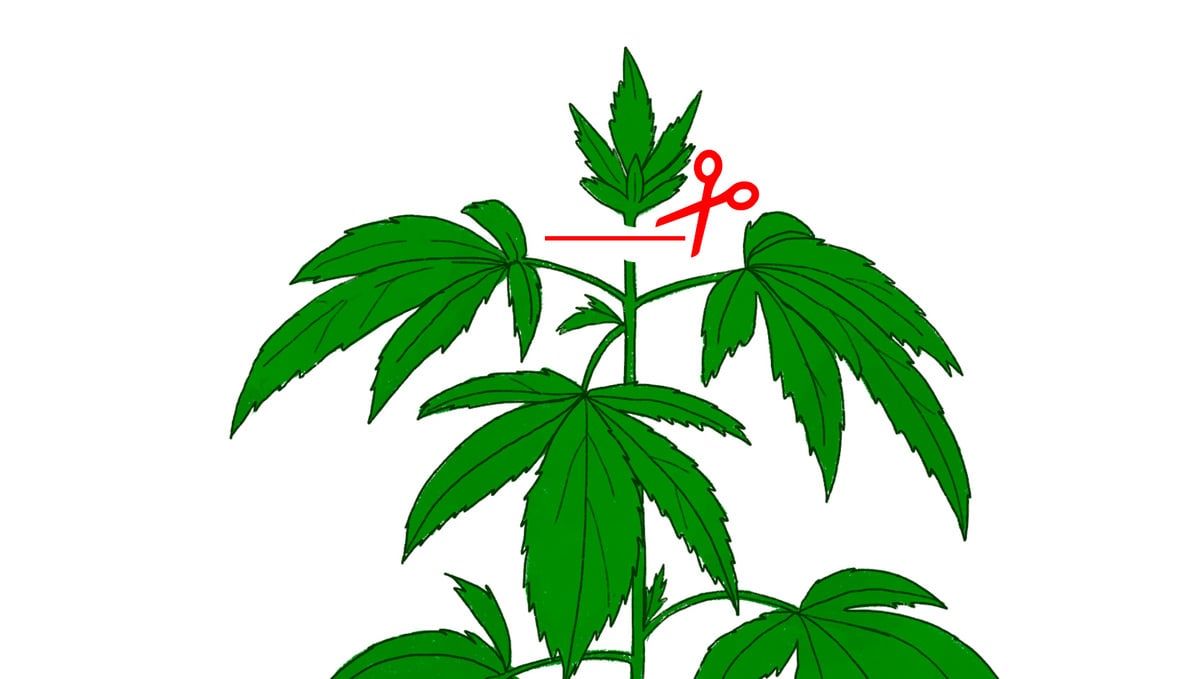
It will produce a plant with several colas, allowing light to reach all bud sites. Remember your plant will need a couple of days to recover after being topped, this will result in a longer vegetative stage.
Tip: We recommend sterilizing your scissors or hand with alcohol before topping, this way you may prevent infections.
FIM
Fimming is a more complicated version of Topping. Unlike topping where you remove the whole region of new growth, fimming consists of removing around 75% of the new growth, the goal is to produce four new branches instead of two, achieving the same result as topping without having to perform as much training.
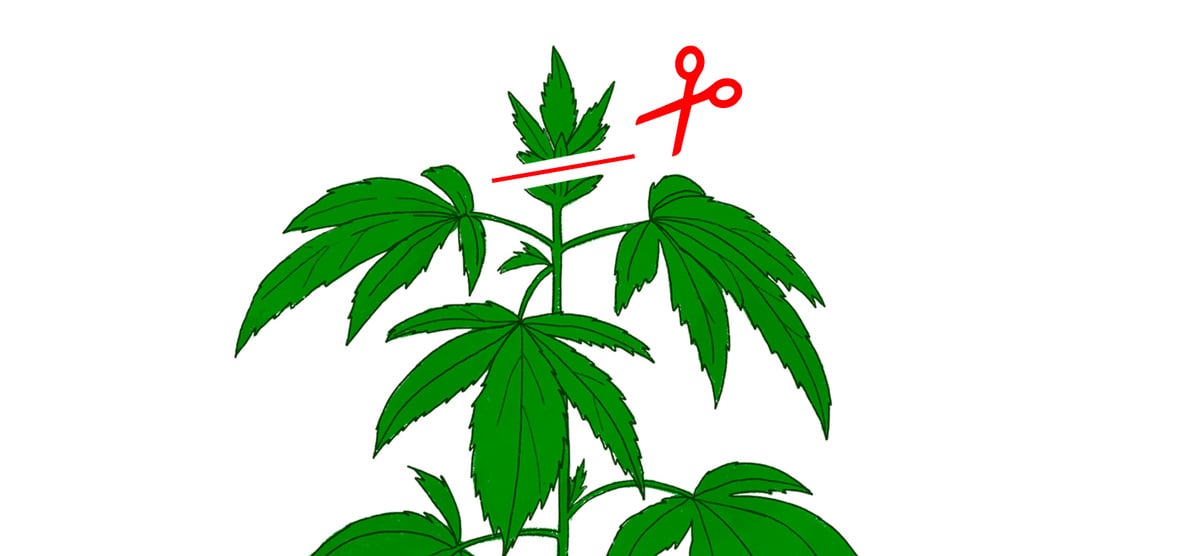
You can perform fimming or topping on side branches if you want to grow a bushier plant while performing either of them on the top will result in a taller plant.
Super Cropping
Super Cropping (aka Stem Mutilation) is a more aggressive version of LST, instead of tying down the top of the plant, you’re bending the branch until the fibers break. The goal is to not break the whole branch or even tear the skin of the stalk, you simply want it to bend over.
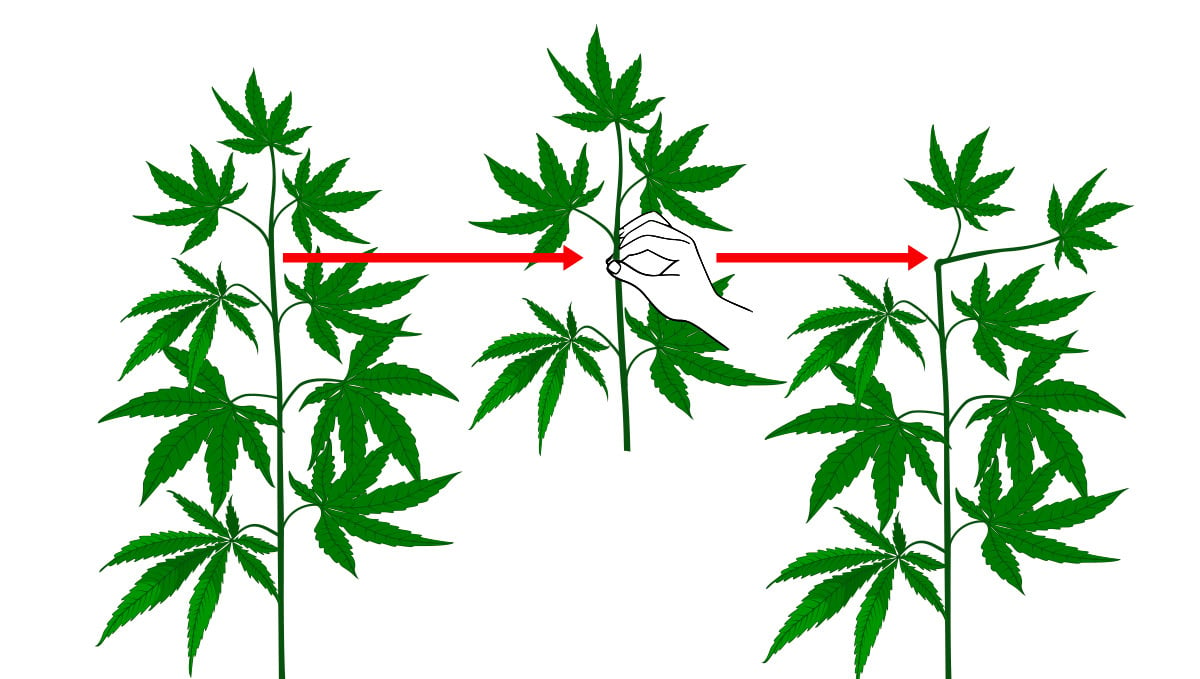
To do this you have to gently roll and squeeze the desired branch, you will feel when it starts to weaken and will eventually bend. Like all other training techniques, the goal is to level the canopy to allow light to reach all bud sites.
3. Training Autoflowering Plants
We recommend performing only LST techniques on your autoflowers. While it can shock your plant if done aggressively, performing low stress techniques slowly and steady every couple of days you will achieve the desired results without affecting your plants growth. At Fast Buds we offer strains that react exceptionally well to LST like the Gorilla Glue Auto. She is a very resistant autoflower and a big yielder. By tying her side branches down you will increase the number of flowering sites and increase yields.
Although you can grow them without training, performing LST will result in more colas, denser buds, and increased yield. Even though you can use high stress training techniques on autoflowers it is NOT recommended. Typically autoflowers need around 4 weeks to start flowering, performing HST will stunt growth for a couple of days. High Stress Training your auto as little as two times during her entire vegetative stage can add up into a week of recovery. This will seriously affect your plant’s height and decrease yield significantly.
If you want to experiment with HST and autoflowering plants, look for plants that take a bit longer to start flowering, like our Six Shooter Auto. The extra couple of weeks she needs to fully mature and it can compensate for the recovery time after performing any HST technique.
4. Our Recommended Training Schedule for Autos
If you are a super experienced cultivator with a bunch of autoflowering crops to your name, then you probably already have a really good idea of what works for you, and what doesn't. There is no one straight answer as to the best training methods or schedule for autos, as every strain reacts differently. But, if you are new to the auto game and are looking for some basic guidelines, try starting out by following this training schedule for autos.
- First up, autos are sensitive. You want to ensure that you don't over-stress them. This starts right at the, well, start - Always plant your autos in the pot you intend to finish them in. This means you won't have to transplant them, which can cause some pretty major stress and growth stunting.
- Next up, it's time to choose between using either the tie-down method or setting up a ScrOG net. These can be used in tandem, but the main point is that you want to flatten out the Apical dominance and turn the canopy into a horizontally spreading area. If you have the items available, use the ScrOG method. If not, no worries, just grab some twine and slowly but surely tie down the main steam and then the branches to promote an evenly spread canopy.
- This promotes much more even bud production, strength, and density. When the canopy is at the same height, the plant will switch away from sending the majority of Auxin, the main growth hormone, to the top cola and instead split it between all the budding sites. It also allows for much higher rates of light penetration and air exchange throughout the canopy. This helps to prevent mold and other pests, as well as offering each bud more sun exposure.
What About Topping?
For the vast majority of novice growers out there, we really can't recommend topping your autoflowering plants. Can you top autos, though? Yes, of course. but before you start going down such drastic roads, you want to have a really in-depth understanding of not just general cultivation, but about the particular cultivar you are considering topping.
Topping can be a great way to increase yields, especially if you are using trellis systems, but it can also really stress out the plant and stunt growth. If you have a solid grasp of autos and are comfortable with topping them, then go ahead - just be aware that there is always a risk involved which could lead to a decrease in the final yield weight.
5. In Conclusion
A combination of both High and Low Stress training can be done to increase yields with photoperiodic plants. We recommend beginners to start training autoflowers with LST techniques, as you get the hang of it you can evolve to experimenting with HST on autos. Try not to overdo it, you can always train more but you can’t take after the damage’s been done. Remember the goal is to have a better harvest than the last one while improving your growing skills and keeping your plants happy and healthy.








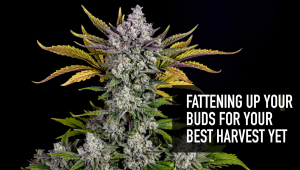
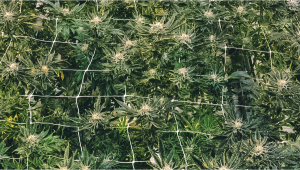
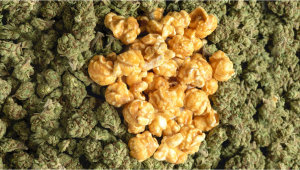
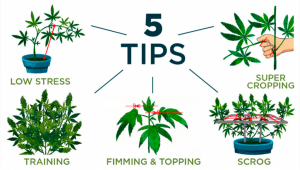


Comments